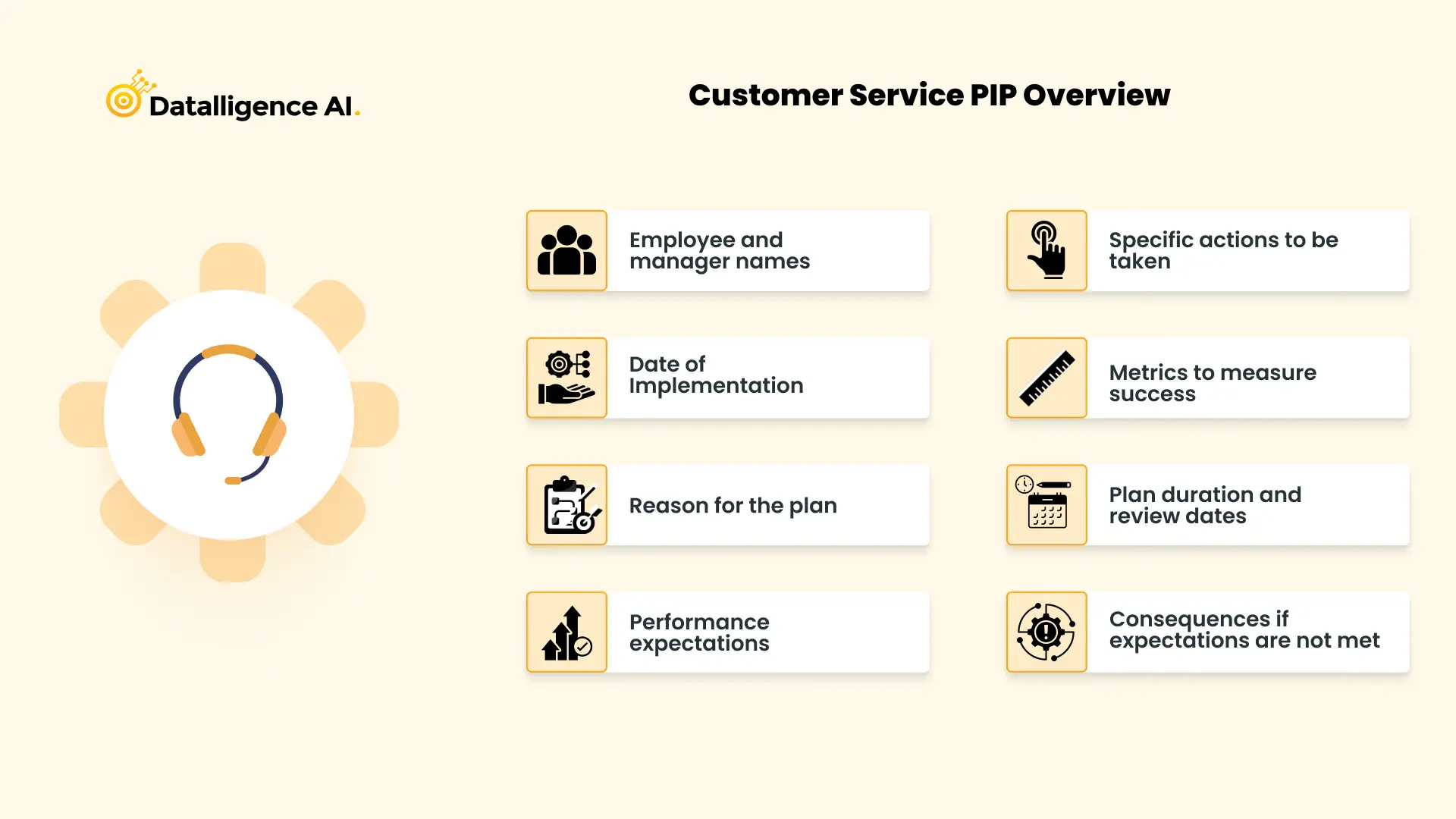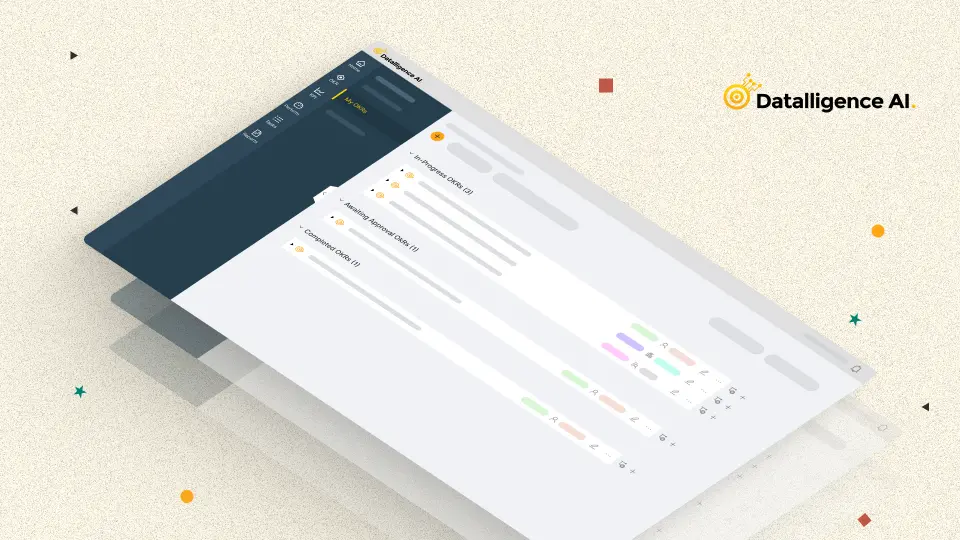In today’s competitive business landscape, organizations are constantly seeking ways to enhance employee performance and drive success. A performance improvement plan (PIP) is a powerful tool that managers can use to help struggling employees get back on track. By providing clear expectations, specific goals, and targeted support, a well-crafted PIP can transform underperforming staff into valuable assets for the company.
This article explores six effective performance improvement plan examples across different areas of business. From boosting sales figures to enhancing customer service, improving project management skills, developing leadership abilities, and optimizing human resources practices, these PIPs offer practical strategies to address common workplace challenges. By examining these examples, managers and HR professionals can gain insights to create tailored plans that drive employee growth and contribute to overall organizational success.
Sales Performance Improvement Plan
Sales PIP Overview
A Sales Performance Improvement Plan (PIP) is a structured approach to enhance the skills, behaviors, and results of underperforming sales representatives. It serves as a wake-up call for those who are seriously struggling to meet expectations. The purpose of a PIP is to define critical areas of concern, reiterate team expectations, and demonstrate a commitment to improving sales performance.
PIPs are not meant to address one-time issues or behavioral problems. Instead, they focus on persistent performance issues that have been repeatedly addressed without corresponding improvement. The duration of a PIP typically ranges from 30 to 90 days, depending on the severity of the situation.
Sales PIP Action Items
To create an effective Sales PIP, managers should include the following key elements:
- Clear performance expectations and their impact on the business
- Specific performance issues with supporting data and metrics
- Measurable objectives for improvement
- Resources and support provided by the company
- Consequences for failing to meet objectives
When developing action items, it’s crucial to set SMART goals:
- Specific: Clearly define the desired improvements
- Measurable: Use relevant metrics to track progress
- Achievable: Ensure targets are realistic and attainable
- Relevant: Align goals with key business outcomes
- Time-bound: Set specific deadlines for each objective
Sales PIP Timeline
A well-structured Sales PIP should include a clear timeline for improvement and review. Here’s a suggested approach:
- Initial meeting: Present the PIP to the sales representative
- Regular check-ins: Schedule weekly or bi-weekly progress meetings
- Milestone reviews: Set 3-4 checkpoints for detailed performance evaluations
- Final review: Conduct a comprehensive assessment to determine the outcome
Throughout the PIP process, managers should provide ongoing guidance, support, and necessary resources to help the sales representative succeed. This may include additional training, coaching, or tools to address identified skill gaps.
It’s essential to remember that a PIP is not meant to be a passive exercise. Managers must actively monitor progress, provide feedback, and adjust the plan as needed. By maintaining open communication and offering support, organizations can increase the chances of turning around underperforming sales representatives and contributing to overall team success.
Performance Improvement Plan (PIP) Example: Sales Manager
- Employee: John Doe
- Role: Sales Manager
- Manager: Jane Smith
- Review Date: October 15, 2024
Areas for Improvement:
- Sales Targets: Consistently missed targets, underperforming by 20% in Q2.
- Team Engagement: Reports of low morale within the sales team, impacting overall performance.
- Client Relationships: Received negative feedback from several key clients regarding communication and follow-up.
Improvement Goals:
- Sales Performance: Increase sales performance to meet at least 95% of the Q3 sales target.
- Team Engagement: Enhance team morale with a goal to achieve an 80% satisfaction rate in the next internal survey.
- Client Relationships: Improve client communication to resolve all complaints within 48 hours and restore client trust.
Action Steps:
- Daily: Monitor sales metrics and ensure timely follow-ups with clients to address any concerns.
- Weekly: Hold strategy meetings with the sales team to discuss challenges and brainstorm solutions.
- Monthly: Conduct one-on-one reviews with the manager to assess progress and adjust strategies as needed.
Expected Outcome:
By the end of the quarter, John is expected to achieve his sales targets, improve team morale, and restore positive client relationships, leading to a more cohesive and successful sales operation.
Customer Service Performance Improvement Plan

Customer service has a significant impact on a company’s profitability and reputation. A well-designed Performance Improvement Plan (PIP) for customer service can lead to sales increases of 20% or more of total company revenue. To create an effective PIP, organizations need to focus on specific areas and implement strategic steps to achieve measurable goals.
Customer Service PIP Overview
A Customer Service PIP is a tool designed to help underperforming employees improve their skills and meet expectations. It addresses specific performance deficiencies, identifies training gaps, and sets clear goals for development. The plan typically spans 30, 60, or 90 days and includes the following key elements:

Customer Service PIP Action Items
To create an effective Customer Service PIP, managers should include the following action items:
- Set SMART goals (Specific, Measurable, Achievable, Relevant, Time-bound)
- Provide additional training and resources
- Implement continuous skill development programs
- Offer mentorship opportunities
- Invest in technology and tools for learning and growth
- Schedule regular check-ins and progress meetings
- Provide constructive feedback and support
- Address behavioral issues, if applicable
- Manage workload and clarify priorities
- Encourage employee engagement and motivation
Customer Service PIP Timeline
A well-structured Customer Service PIP should follow a clear timeline:
- Initial meeting: Present the PIP to the employee
- Weekly evaluations: Monitor progress and provide feedback
- Bi-weekly or monthly milestones: Conduct detailed performance evaluations
- Final review: Assess overall improvement and determine next steps
Throughout the PIP process, managers should maintain open communication, offer support, and adjust the plan as needed. By implementing these strategies, organizations can improve customer service performance, increase customer satisfaction, and ultimately drive business success.
PIP Example: Customer Service Representative
- Employee: Sarah Brown
- Role: Customer Service Representative
- Manager: Michael Lee
- Review Date: October 15, 2024
Areas for Improvement:
- Response Times: Current average response time is 12 hours, significantly above the company standard of 4 hours.
- Accuracy: Notable instances of providing incorrect information to customers, leading to confusion and dissatisfaction.
- Customer Satisfaction: Below-average customer satisfaction scores, with an increase in negative reviews over the past quarter.
Improvement Goals:
- Response Efficiency: Reduce the average response time to 4 hours or less to meet company standards.
- Accuracy: Achieve 100% accuracy in customer interactions by double-checking information before communicating.
- Customer Satisfaction: Raise customer satisfaction scores to 90% by enhancing service quality and follow-up procedures.
Action Steps:
- Daily: Prioritize responding to customer queries within the expected time frame and double-check all information before sharing.
- Weekly: Participate in training sessions focused on product knowledge and effective communication skills.
- Monthly: Review customer feedback with the manager and implement changes to address recurring issues.
Expected Outcome:
Sarah is expected to meet the response time standards, ensure accuracy in her communications, and significantly improve customer satisfaction ratings, leading to a better overall customer experience.
Project Management Performance Improvement Plan

Performance improvement is crucial for project managers to ensure their projects deliver value, meet objectives, and align with strategic goals. A well-structured Performance Improvement Plan (PIP) can help address gaps in quality, efficiency, and effectiveness of project management processes.
Project Management PIP Overview
A Project Management PIP is a tool designed to help underperforming project managers improve their skills and meet expectations. It addresses specific performance deficiencies, identifies training gaps, and sets clear goals for development. The plan typically spans 30, 60, or 90 days and includes the following key elements:
- Project manager’s name and supervisor’s name
- Date of implementation
- Reason for the plan
- Performance expectations
- Specific actions to be taken
- Metrics to measure success
- Plan duration and review dates
- Consequences if expectations are not met
Project Management PIP Action Items
To create an effective Project Management PIP, managers should include the following action items:
- Adopt the GROW Model: This framework simplifies performance improvement by asking four questions to align growth with objectives, understand current gaps, explore options, and make informed choices for continuous success.
- Match methods to issues: Look at the project’s specific challenges and match them with the right improvement methods. Use Lean for efficiency or Six Sigma for quality control. Tailor solutions to the project’s needs for better results.
- Implement a state-of-the-art project management tool to improve task tracking, team collaboration, and deadline adherence.
- Initiate weekly status meetings with project teams and stakeholders to ensure all parties are aligned and aware of project progress and potential roadblocks.
- Develop and implement a risk management plan for each new project to identify potential issues early and develop mitigation strategies.
- Attend specialized workshops on time management and efficient project planning.
Project Management PIP Timeline
A well-structured Project Management PIP should follow a clear timeline:
- Immediate actions:
- Enroll in project management workshops
- Select and implement a project management tool
- Weekly actions:
- Conduct project status meetings
- Review progress on action items
- Project initiation:
- Develop and implement a risk management plan for each new project
- Develop and implement a risk management plan for each new project
- Project completion:
- Evaluate on-time delivery and efficiency of project completion
- Evaluate on-time delivery and efficiency of project completion
- Final review:
- Assess overall improvement and determine next steps
Throughout the PIP process, managers should maintain open communication, offer support, and adjust the plan as needed. By implementing these strategies, organizations can improve project management performance, increase stakeholder satisfaction, and ultimately drive business success.
PIP Example: Project Manager
- Employee: John Davis
- Role: Project Manager
- Manager: Sarah Bennett
- Review Date: October 15, 2024
Areas for Improvement:
- Timeline Management: Projects have consistently missed deadlines, leading to delays in product delivery.
- Resource Allocation: Inefficient use of resources, resulting in budget overruns and underutilization of team members.
- Stakeholder Communication: Inadequate updates provided to stakeholders, causing misunderstandings and dissatisfaction.
Improvement Goals:
- Meeting Deadlines: Ensure projects are completed on time by improving planning and time management skills.
- Efficient Resource Use: Optimize resource allocation to stay within budget and utilize team members effectively.
- Enhanced Communication: Provide regular, clear updates to stakeholders to keep them informed and aligned with project goals.
Action Steps:
- Daily: Monitor project timelines closely, adjusting schedules and resources as needed to avoid delays.
- Weekly: Review resource allocation with the team to ensure efficient use of budget and personnel.
- Bi-Weekly: Schedule regular meetings with stakeholders to provide progress updates and address any concerns.
Expected Outcome:
John is expected to improve his ability to manage project timelines, optimize resource allocation, and communicate effectively with stakeholders, resulting in timely project deliveries, reduced costs, and increased stakeholder satisfaction.
Leadership Performance Improvement Plan

Leadership plays a crucial role in shaping company culture and team dynamics. When a leader exhibits poor performance, it can have far-reaching consequences, affecting team morale, productivity, and overall work performance. A well-designed Performance Improvement Plan (PIP) for leadership focuses on addressing specific deficiencies and setting measurable objectives to enhance leadership skills.
Leadership PIP Overview
A Leadership PIP is a structured approach to help underperforming leaders improve their skills and meet expectations. It typically includes the following elements:
- Employee and supervisor names
- Implementation date
- Reason for the plan
- Performance expectations
- Specific actions to be taken
- Metrics to measure success
- Plan duration and review dates
- Consequences if expectations are not met
Leadership PIP Action Items
To create an effective Leadership PIP, managers should include the following action items:
- Attend leadership development programs focusing on effective communication, motivation techniques, and team building.
- Implement regular team meetings for project updates, feedback exchange, and transparent communication of department goals and challenges.
- Develop and communicate clear, measurable goals for each team member, providing clear direction and expectations.
- Foster a culture of openness by encouraging team members to share challenges, suggestions, and feedback directly with the leader.
- Introduce a structured feedback system for team members to provide anonymous feedback about leadership style and areas of improvement.
- Enroll in time management courses to ensure tasks are delegated, reviewed, and completed on time.
- Participate in a mentorship program with a senior leader for guidance and best practices in team management.
Leadership PIP Timeline
A well-structured Leadership PIP should follow a clear timeline:
- Immediate actions (within 1 month):
- Attend a leadership training workshop
- Implement weekly team check-ins
- Introduce a structured feedback system
- Immediate actions (within 1 month):
- Ongoing actions (throughout PIP duration):
- Regular meetings with the mentor
- Weekly progress reviews with supervisor
- Mid-term evaluation (3 months):
- Assess improvement in team morale and productivity
- Review feedback from team members
- Final review (6 months):
- Evaluate overall leadership performance
- Determine next steps based on progress
By implementing these strategies, organizations can improve leadership performance, increase team satisfaction, and ultimately drive business success. A well-executed Leadership PIP not only benefits the individual leader but also promotes better company cohesion and improves communication across teams.
PIP Example: Team Leader
- Employee: Emily Roberts
- Role: Team Leader
- Manager: Michael Thompson
- Review Date: October 15, 2024
Areas for Improvement:
- Team Morale: Decreased team morale due to ineffective communication and lack of motivation.
- Decision-Making: Slow decision-making processes causing delays in project progress.
- Conflict Resolution: Difficulty addressing and resolving conflicts within the team, impacting productivity and collaboration.
Improvement Goals:
- Boost Team Morale: Enhance team morale by improving communication, recognition, and motivational techniques.
- Speed Up Decision-Making: Make timely and informed decisions to maintain project momentum and address issues swiftly.
- Effective Conflict Resolution: Develop skills to address and resolve team conflicts promptly, fostering a more collaborative work environment.
Action Steps:
- Daily: Engage in open communication with team members to address concerns and provide support.
- Weekly: Implement a system for recognizing and rewarding team achievements to boost morale.
- Bi-Weekly: Participate in leadership training focused on decision-making and conflict resolution skills.
Expected Outcome:
Emily is expected to improve team morale through enhanced communication and recognition practices, make quicker and more effective decisions, and resolve conflicts within the team, leading to a more productive and positive work environment.
Human Resources Performance Improvement Plan

A Performance Improvement Plan (PIP) in Human Resources is a structured approach to address employee performance deficiencies and foster professional growth. It serves as a formal tool that outlines areas for enhancement, sets clear targets, and offers guidance to employees who are struggling to meet expectations.
HR PIP Overview
An HR PIP is designed to:
- Clarify performance issues and expectations
- Provide a roadmap for improvement
- Offer support and resources
- Set measurable objectives
- Establish a timeline for progress
The plan typically spans 30, 60, or 90 days, depending on the nature and severity of the performance issues. It’s crucial to note that a PIP should be implemented when there’s a genuine commitment to help the employee improve, not as a precursor to termination.
HR PIP Action Items
To create an effective HR PIP, managers should include the following elements:
- State performance deficiencies with supporting data
- Set SMART goals (Specific, Measurable, Achievable, Relevant, Time-bound)
- Outline specific actions for improvement
- Provide necessary resources, training, or coaching
- Schedule regular progress meetings
- Document all discussions and progress
HR professionals should review the plan to ensure fairness and remove any potential bias. They should also guide managers in administering the PIP and provide ongoing support to managers and employees throughout the process.
HR PIP Timeline
A well-structured HR PIP timeline typically includes:
- Initial meeting: Present the PIP to the employee
- Weekly check-ins: Review progress and provide feedback
- Mid-point evaluation: Assess improvement and adjust if necessary
- Final review: Determine the outcome of the PIP
Throughout the process, it’s essential to document all meetings, progress, and any additional support provided. If the employee successfully meets the objectives before the PIP’s expiration date, the plan can be formally closed, and the employee’s success should be recognized.
By implementing a well-designed HR Performance Improvement Plan, organizations can address performance issues effectively, foster employee growth, and align individual performance with company goals and values. This proactive approach not only helps struggling employees but also contributes to a more productive and engaged workforce.
PIP Example: HR Specialist
- Employee: Jason Lee
- Role: HR Specialist
- Manager: Sarah Johnson
- Review Date: November 15, 2024
Areas for Improvement:
- Recruitment Efficiency: Jason’s current average time-to-hire is 60 days, which is 20 days longer than the department target.
- Employee Relations: Jason has received feedback indicating a lack of proactive resolution of employee grievances, with several issues remaining unresolved beyond a reasonable timeframe.
- Compliance: There have been recent lapses in adhering to updated HR policies, including timely updates to employee records and benefits administration.
Goals:
- Streamline Recruitment: Reduce time-to-hire from 60 days to 40 days by optimizing the recruitment process and utilizing new recruitment tools.
- Improve Grievance Handling: Resolve all employee grievances within 48 hours by implementing a standardized grievance handling procedure and increasing responsiveness.
- Enhance Compliance: Achieve and maintain 100% compliance with HR policies by regularly updating documentation and completing required compliance training.
Actions:
- Recruitment Efficiency:
- Daily: Review and update job postings, actively source candidates, and schedule interviews.
- Weekly: Analyze recruitment metrics to identify and address delays.
- Monthly: Implement new recruitment strategies and tools to expedite the hiring process.
- Employee Relations:
- Daily: Monitor and respond to employee grievances.
- Weekly: Hold feedback sessions with employees to address and resolve concerns promptly.
- Monthly: Review and refine grievance handling procedures to ensure quicker resolution.
- Compliance:
- Daily: Update and maintain accurate employee records and benefits information.
- Weekly: Conduct self-audits to ensure compliance with current HR policies.
- Monthly: Complete compliance training and review policy changes with the team.
Timeline:
- Initial Meeting: Discuss the PIP and set expectations with Jason.
- Weekly Check-ins: Review progress on goals and provide feedback.
- Mid-term Evaluation: Assess progress on recruitment efficiency and grievance handling.
- Final Review: Evaluate overall improvement and compliance adherence. Determine next steps based on Jason’s progress.
Expected Outcome:
Jason is expected to improve his recruitment efficiency, handle grievances more effectively, and ensure full compliance with HR policies. Successful implementation of the PIP should result in a more streamlined hiring process, better employee relations, and adherence to HR regulations.
Conclusion
Performance Improvement Plans are powerful tools to boost employee success and organizational growth. By examining these six examples across different business areas, managers and HR professionals gain valuable insights to create tailored plans that address specific challenges. These PIPs offer practical strategies to enhance sales performance, improve customer service, optimize project management, develop leadership skills, and refine HR practices.
To wrap up, implementing well-structured PIPs can lead to significant improvements in employee performance and overall business success. Datalligence offers solution-based content and tools to help organizations create effective Performance Improvement Plans tailored to their unique needs. To learn more about how Datalligence can support your performance management efforts, schedule a demo today.
FAQs
- What does a performance improvement plan typically include?
A performance improvement plan usually outlines specific goals and objectives to enhance performance. For example, it might set a target to boost customer satisfaction ratings by 20% within three months, ensure all customer interactions are conducted positively and professionally, and achieve a 90% rate in resolving customer issues promptly and effectively. - What are the steps to create an effective performance improvement plan?
To create an effective performance improvement plan, start by reviewing the company’s expectations and the roles specific to the employee. Identify the key areas that need improvement, develop a detailed action plan, establish a schedule for follow-up meetings to monitor progress, and clearly define the subsequent steps to be taken. - How is a performance improvement plan used to address unprofessional behavior?
A performance improvement plan for unprofessional behavior is a strategic document that addresses issues like poor performance or behaviors that don’t meet professional standards. It provides a clear framework for discussing these issues, setting expectations for improvement, and outlining a pathway towards better performance and professional development. - What is the purpose of a performance improvement plan concerning work quality?
A performance improvement plan (PIP) related to the quality of work is intended to support employees who are not meeting performance standards. It clearly defines the areas of deficiency, sets specific improvement goals, identifies necessary training or resources, and outlines a timeline for expected progress, helping employees to enhance their work quality effectively.











